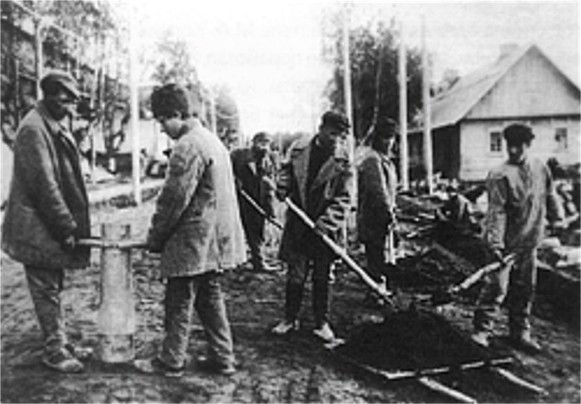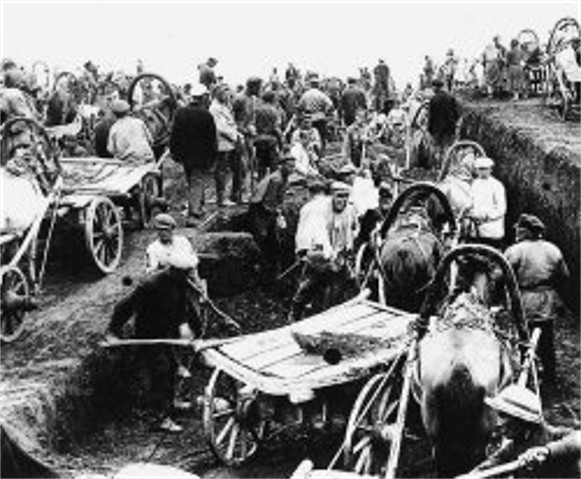Labor camps
Labor camps (aka corrective-labor camps) [трудові табори; trudovi tabory]. (Map: Labor camps in the Former USSR.) Forced-labor concentration camps: the principal type of punitive institution in the former Soviet Union. There were five classes of labor camps (in order of increasing severity): exile colony, ordinary-regime camp, intensified-regime camp, strict-regime camp, and special-regime camp. Exile colonies were for prisoners who were deemed to be ‘solidly on the path to reform.’ Ordinary-regime camps held prisoners (male or female) serving sentences of less than three years for other than very serious crimes or serving the initial portion (not more than three years) of longer composite sentences for major offences. Intensified-regime camps were for men sentenced to more than three years for serious offences. Women and men convicted of serious state crimes (usually for political dissent; see Political crime, Political prisoners, and Dissident movement) and ‘especially dangerous recividists’ were incarcerated in strict-regime camps. The special-regime camps were for men with commuted death sentences and ‘especially dangerous recividists.’ Prison officials had the power to change a prisoner's category depending on his or her behavior. A particularly uncooperative prisoner could be moved from a camp to a prison, where conditions were even harsher. Apart from the lack of freedom, the most punitive feature of labor camps was their semistarvation diet. Working men in the strict-regime camps should consume 3,100 to 3,900 calories per day, and women, 2,400 to 2,700 calories, according to the World Health Organization (WHO). Their actual diet contained 2,100 calories and could be reduced to 1,300 calories on disciplinary grounds. Carbohydrate-to-protein ratios far exceeded maximums set by the WHO, and the quality of food was very poor: there were no fresh fruits or vegetables, fish (the main protein) was sometimes rotten, and food was often infested with maggots and cockroaches.
Honest labor, according to official theory, was an integral part of the prisoner's re-education. But the more evident purpose of camp labor was economic and punitive. The economic output of labor camps was large enough to figure as a separate factor in Soviet planning. But the punitive purpose of prison labor was the chief reason for the presence of police organs. The labor was strenuous, fatiguing, and often dangerous. Workplaces were underventilated and underheated in the winter. Clothing for outdoor workers was inadequate. Machinery was old and in ill repair. Failure to meet high production quotas was punished with lower food rations and the loss of correspondence or visiting rights. Injuries were common, particularly in three uranium-mining camps in Ukraine, where few prisoners survived their sentences. Poor diet and hard work often resulted in illness. Medical treatment in the labor camps was poor and often withheld altogether. Prisoners have also been known to have refused operations, because of the ineptness of the medical staff. Besides material hardships prisoners endured various restrictions of their rights, including censorship and mail limitations (they could send from one to three letters a month, depending on the type of camp). In some camps all prisoners were shaved bald on admission. In some prisons, particularly in the RSFSR, only Russian could be used.
Over a hundred labor camps in the Ukrainian SSR were known in the West (see table). A number of them were designed for amputees and seriously ill prisoners, and 12 of them were for 14-to-18 year-olds. Political prisoners were sent usually to labor camps outside Ukraine. The prison population of the USSR was a state secret. According to Amnesty International estimates based on semiofficial sources, there were at least one million prisoners in the USSR, in the 1970s, of whom more than 10,000 were political prisoners . Approx 40 percent of all political prisoners in the USSR were Ukrainians.
The principal legislation governing Ukrainian labor camps was the Criminal Code of the Ukrainian SSR (1961), the Corrective-Labor Code of the Ukrainian SSR (1971), which was based on the foundations of the Corrective-Labor Legislation of the USSR and the Union Republics (1969), and the Rules of Internal Order for Corrective-Labor Institutions, which gave prison administrators wide discretionary powers. Because the central procuracy was ineffective in monitoring the camps, the codes afford the inmates hardly any protection from arbitrary and cruel treatment by the staff. (See also Concentration camps, Forced labor, and Penitentiary system.)
BIBLIOGRAPHY
Amnesty International. Prisoners of Conscience in the USSR: Their Treatment and Conditions (London 1975)
Shifrin, A. The First Guidebook to Prisons and Concentration Camps of the Soviet Union (Uhldingen 1980)
Alexander Feldman, Christine Freeland
[This article originally appeared in the Encyclopedia of Ukraine, vol. 3 (1993).]

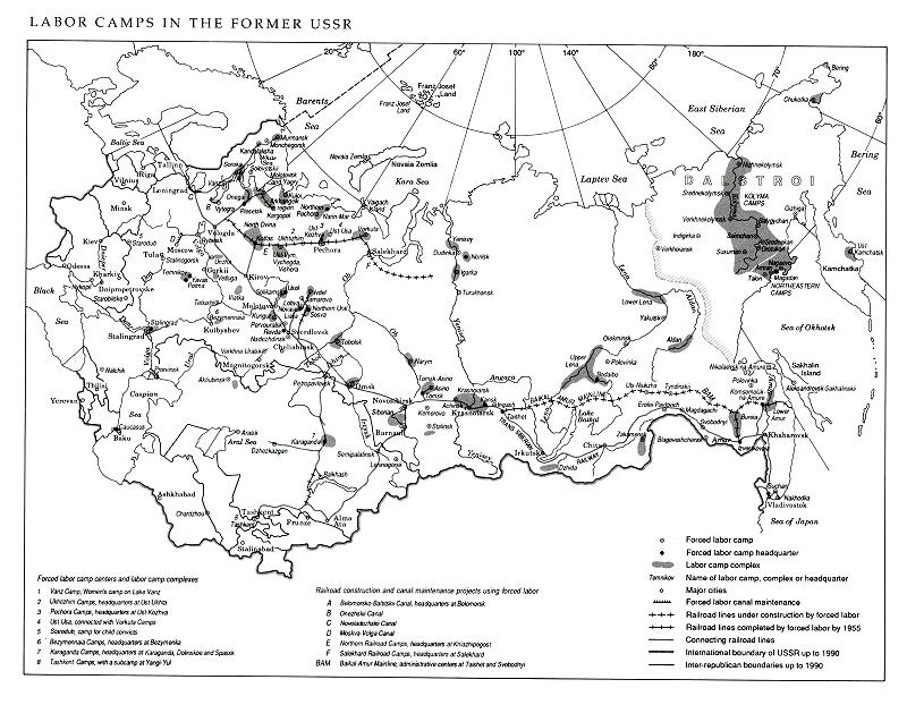
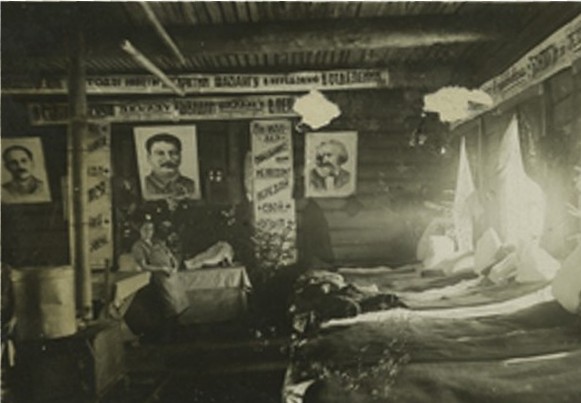
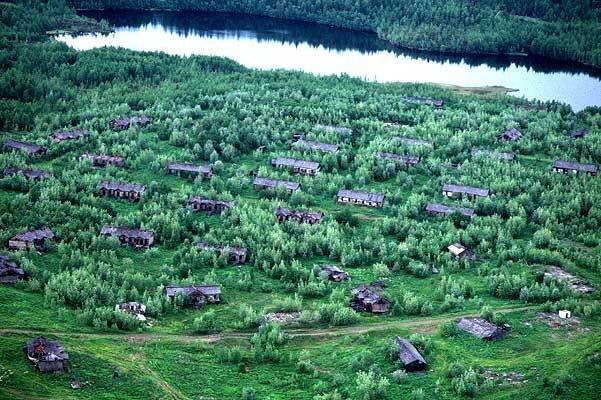
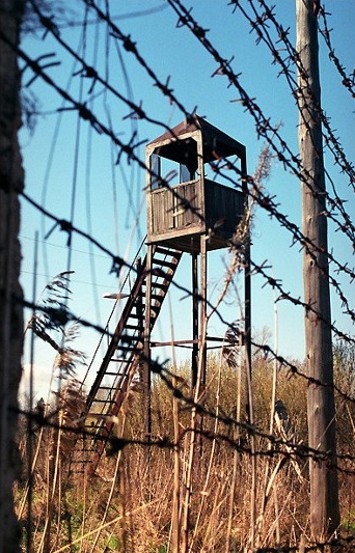

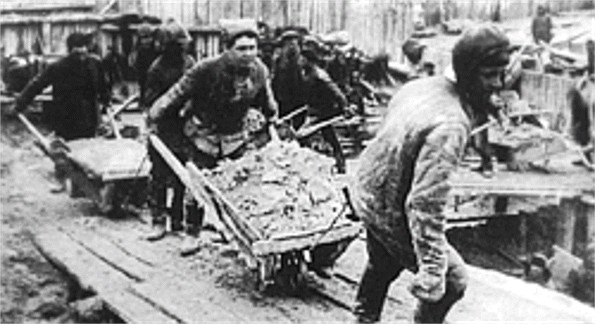
%20forcedlabor%20camp.jpg)
